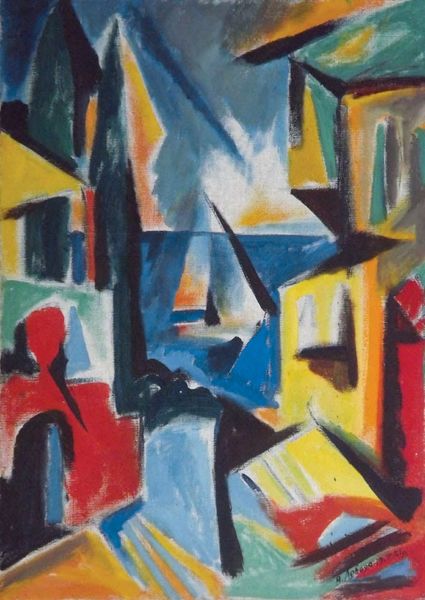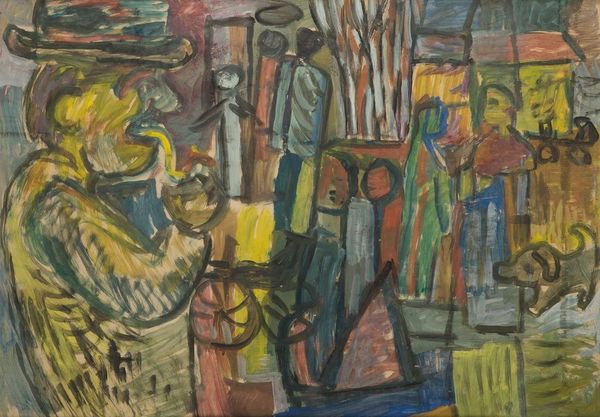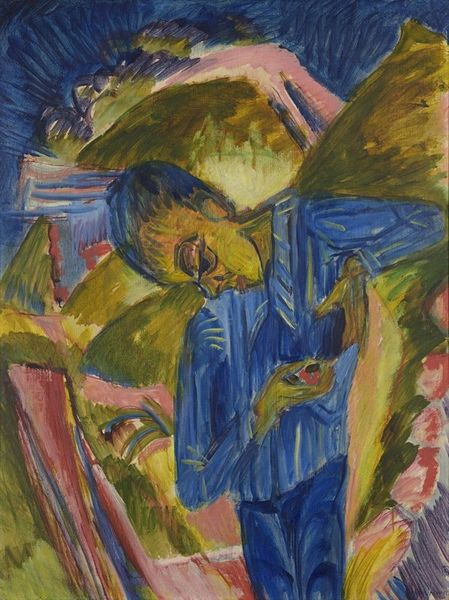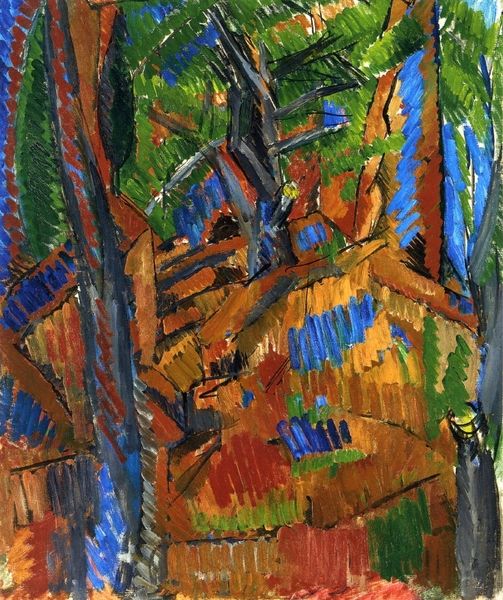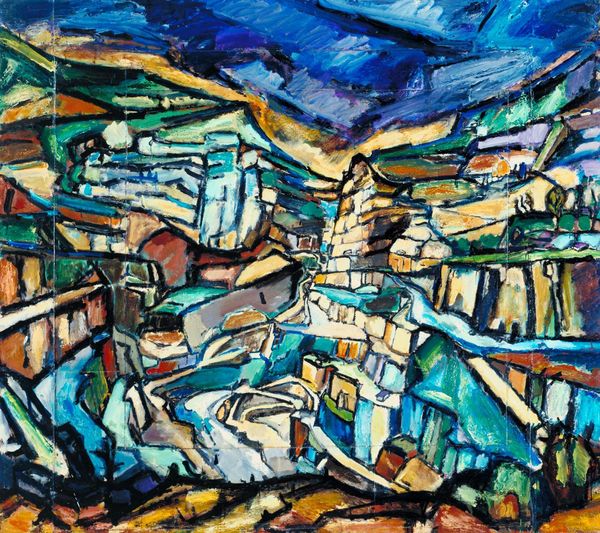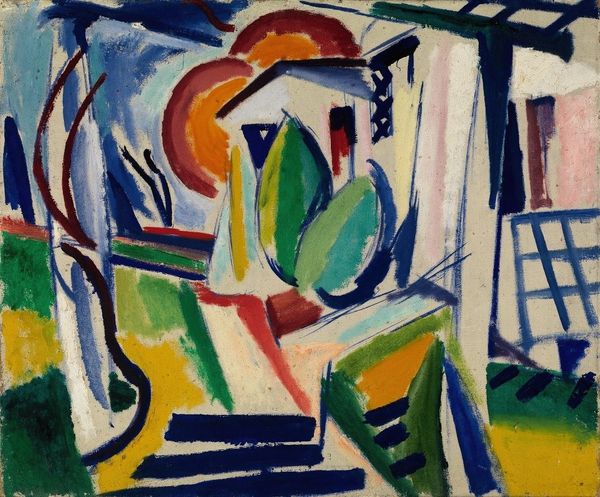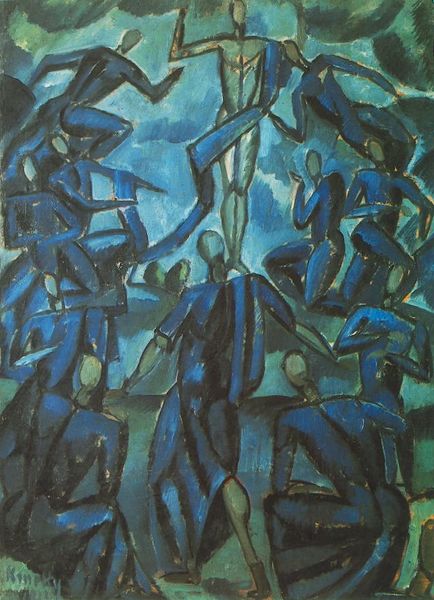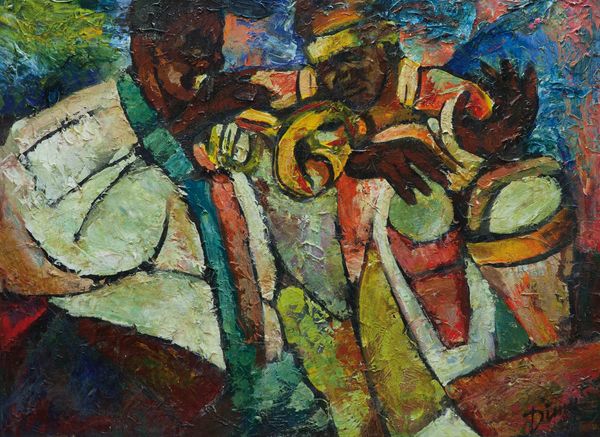
painting, oil-paint
#
painting
#
oil-paint
#
landscape
#
figuration
#
form
#
oil painting
#
female-nude
#
expressionism
#
cityscape
#
nude
Copyright: Public domain US
Curator: Erich Heckel's "Crystalline Day," painted in 1913, now residing at the Neue Pinakothek in Munich, presents a striking synthesis of figuration and landscape through an expressionist lens. Editor: It strikes me immediately with its bold geometric forms—especially those angular clouds or buildings in the background. And the color palette, though cool with blues and greens, possesses a certain jarring quality. There's a tension here that keeps you unsettled, don't you think? Curator: Absolutely. That unease, I would argue, stems directly from Heckel's technique and the raw materiality of his work. Look at those visible brushstrokes, the way he builds up the oil paint. The deliberate roughness counters any illusion of tranquility. We see labor, both physical and intellectual, exposed. It’s about the act of making, not just the image itself. Editor: True, and considering this was 1913, on the cusp of the First World War, the unease resonates powerfully. We’ve got this female nude almost blending with the harsh environment. Is this about vulnerability, about the body exposed not only to nature but also to the encroaching anxieties of modernity and impending conflict? Curator: Precisely! And let's not forget the cityscape hinted at in the background. Heckel isn't just portraying an idyllic escape. He’s grappling with the tensions between the natural and the industrial, the nude figure serving as a potent symbol caught within those competing forces. What resources did Heckel utilize to transport and distribute his painting? Where does it derive it’s economic power? These details would further add to the understanding of that figure’s place. Editor: The choice of depicting a nude female form can't be divorced from the historical context of objectification, either. Who is this woman in relation to the landscape, to the artist himself? Is she empowered or a subject for the male gaze within the narrative Heckel constructs? Curator: Good point! And thinking materially, the mass production and availability of oil paints at this time certainly impacted the kinds of subject matter being explored by the artist, democratizing art making, for a time at least, to anyone who had the ability and opportunity to purchase paints. Editor: A poignant tension indeed. “Crystalline Day," beyond its aesthetic appeal, becomes a critical lens through which we view not only Heckel’s artistic process but also the complex socio-political climate of his time. Curator: Yes, this work prompts a further questioning of value systems implicit in materialist artistic practices, especially relevant when displayed at prestigious locations such as the Neue Pinakothek, where artistic capital intersects.
Comments
No comments
Be the first to comment and join the conversation on the ultimate creative platform.
